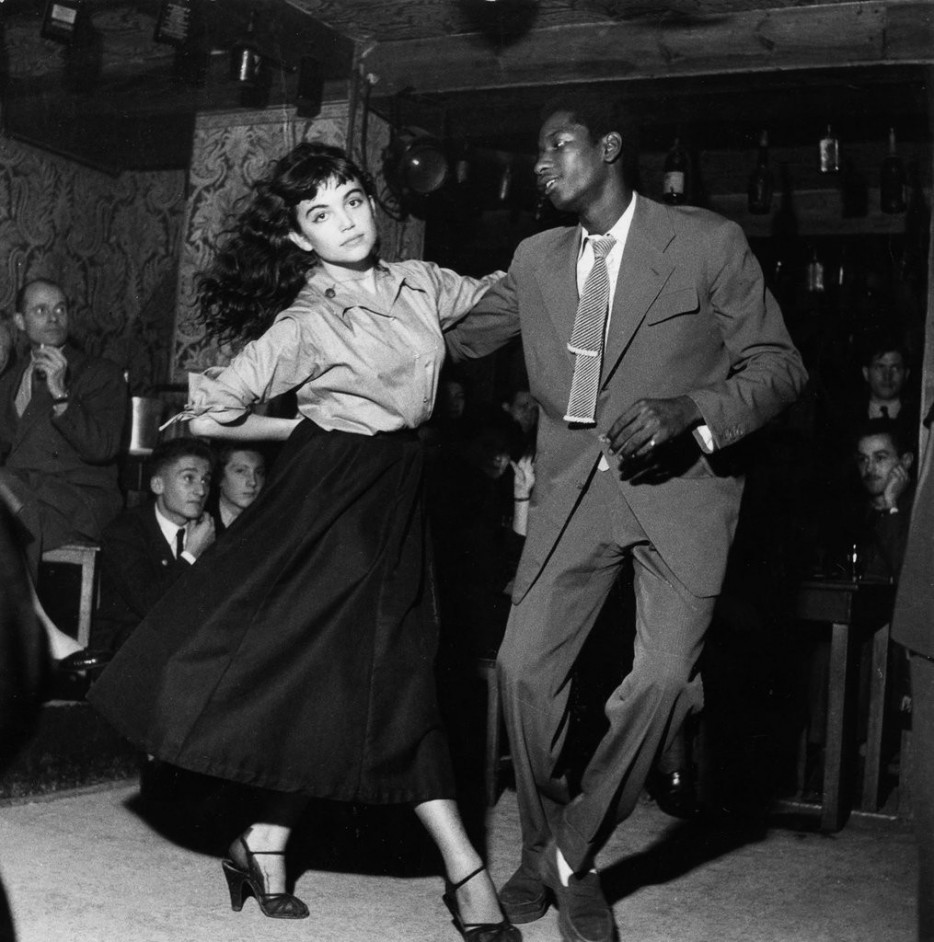
Last weekend I took a trip to a beautiful seaside town on the Costa Blanca in Spain, called Jávea. In the Airbnb I stayed in, there was a pile of old magazines and books. I picked one up, an old French magazine, and flicked through it. On one page, I was stunned for a minute to see an image I know well.
A small black and white image of a couple dancing. The man, dapper in a suit and loafers, has one arm around his partner. She’s cool, in a tucked in shirt and calf length black skirt, one arm on her partner’s shoulder, the other hidden behind her back. She looks directly at the camera, ready to be swung around. They look relaxed and insouciant, moving to a beat. It’s a beautiful picture.
And it has a place close to my heart. It’s an image I came across randomly over a year ago now, and it’s one I’ve studied many times since.
Building a specific picture of what you want
It’s part of a vision board that I created prior to moving to Spain. Along with several other images, it’s a picture I looked at over and over in the run up to moving. These pictures made me dream, I could imagine how I wanted my life to be, how I wanted it to change.
You can download my guide to creating vision boards as a PDF here: How to create a vision board ebook
I’d read a few books that mention how powerful a vision board can be, so I thought I’d give it a go. I knew that I wanted to move to Spain, but I knew that I had to put the idea to my bosses, and get over any fears around actually doing it.
My interpretation is that if you put effort into focussing specifically on what you want, use images to help you visualise what you want, and, importantly, how you want to feel, it helps you move closer to achieving your goal.
The more you can build a specific picture of what you want, the more real it becomes. The more you focus on what you want, and the more open you become to opportunities to make it happen.
My vision board
Take my vision board based on my decision to move to Valencia for example, which I created using Pinterest. (Here’s my post about how to create a vision board – Top 10 tips for creating a vision board.) I called it ‘I live in Ruzafa’ (my neighbourhood in Valencia). I selected any image that related to how I imagined my life to be in Spain to be,. Any image that made me feel happy and excited for my potential life in Spain.
For example, I picked images of the streets I wanted to walk around in.
There’s an image of a people eating dinner sat outside a restaurant, along a cobbled street; it’s early evening and there is soft lighting above their heads, shuttered windows overhead.
I chose a picture of a minimalist pilates studio.
There’s an image of a passageway in a park, with benches along one side, and what appears to be a tunnel of pink bougainvillea stretching along to the end.
There’s a picture of the co-work space I’d spotted on a previous visit.
There are numerous cool cafes I could picture myself drinking in, working in, catching up with friends in.
I had images of a park I wanted to walk and picnic in, the beach I wanted to relax at during weekends.
I had images of the sort of flat I wanted to live in: modern, simple, bright.
Every time I’d look at this vision board, I’d feel a buzz of excitement. It helped me believe that my dream could be possible. It gave me the motivation to go for it and make it happen.
The result
And now, over a year after moving to Valencia, I walk through the streets I’d captured on my vision board. I’m in the cafes, the co-work space, and the park every day. I visit a pilates studio two minutes from my front door and go to the beach whenever the urge takes me. I live in a modern, simple, bright apartment.
And I dance salsa (read more here). Not quite with the pizzazz of the couple in my picture (and I don’t think they’re actually dancing salsa), but nevermind.
I frequently feel that same buzz of excitement I felt when looking at my vision board. I’m really here, doing the things I wanted to do!
I’m not saying this to show off. My life certainly isn’t perfect. But I consciously thought about how I want to life my life, what I want to do, how I want it to be. That’s the first step to making it a reality.
Seeing the picture of the dancers in the magazine touched me. It feels special. My vision board held components of this dream I held so close, that has become a reality. I can see how far I’ve come.
Using visualisations isn’t magic
You’re training your mind to focus on what you want. Willing yourself to do what you really want. It’s about reminding yourself of what’s important to you. When your visualisations start to become reality, it feels like magic.
Please share with someone you think might enjoy exploring vision boards.
Do you need help with a career transition? If you want to get unstuck and move forward with your life, and you’d like to try coaching with me, book in a session here: Contact Me
You can download my guide to creating vision boards as a PDF here: How to create a vision board ebook
Photo: Viralnova




